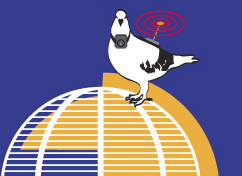Curated by Steve Dietz Cutting edge. Bleeding edge. Leading edge. These are all familiar catch-phrases which suggest we are glimpsing the future of contemporary art, today. Edge Conditions, however, is most emphatically not about the “next new thing.” It presents works of art in a different context, at the intersection of creativity, choice, and what might be called “technology” but what is arguably the world we live in. Whether it is devices such as pencils and chisels, or ubiquitous aspects of modern life such as electricity, phones, or computers and the Internet, technology is simply a set of tools that are more or less familiar at any given time. An edge is a boundary—a divide between this or that—but an “edge condition” is an intersection, not only of art and technology, but of physical and virtual, conceptual and actual, the future and the present, the familiar and the experimental, the real and imagined. It can be discomfiting and disorienting. “Are you human or are you machine?” “Is this place real?” An edge condition is like an estuary where the river meets the ocean—not quite either but teaming with evolved adaptations. This emergent reality is in some sense the transformative condition we currently live in. The artworks in Edge Conditions explore and exploit this intersectional territory. Edge Conditions is on view at the San Jose Museum of Art through November 26, 2006. Checklist Peter Cook, Archigram, Instant City, Airship Visits a Sleeping Town, 1968
See also. C5 Corporation, The Analogous Landscape (Mt. Shasta, Mt. Fuji), 2005
See also. And. Jim Campbell, Wave Modulation and Variation, 2003
See also. And. Jim Campbell, Reconstruction #5, 2005
See also. YOUNG-HAE CHANG HEAVY INDUSTRIES, Confucius Say, 2006
See also. Harold Cohen, Untitled, 1974 Harold Cohen, Untitled, 1977 Harold Cohen, Untitled, 1985 Harold Cohen, Untitled, 1986 Harold Cohen, #060640, 2006 Ken Goldberg, Karl Bohringer, flw, 1996
See also. Ingo Gunther, World Processor, 1988-2006
See also. Auriea Harvey, Michaël Samyn, The Endless Forest, 2005 Lynn Hershman, TV Legs, from the series, Phantom Limb, 1986 Lynn Hershman, Call Me, from the series, Phantom Limb, 1988 Lynn Hershman, Identity CyBorg, 1996 Lynn Hershman, Ruby’s Mood Swings, 2002 Lynn Hershman, DiNA, 2004 – present
See also. Katherine Isbister, Rainey Straus, SimVeillance, 2006 Takuji Kogo, A Song for the Silicon Valley, 2006
See also. Nam June Paik, 20th Century Man, 1996 Alan Rath, Hangwave, 1992 Sam Richardson, That’s a Small Island with Snow and Frozen Water, circa 1970-75
See also. Christiane Robbins, I-5 Passing, v.1.0, 2001-2006
See also. Ben Rubin, Mark Hansen, Listening Post, 2002-2006
See also. And. And. Shirley Shor, Core, 2005 Tamiko Thiel, The Travels of Mariko Horo, 2006
See also. And. Thomson & Craighead, Light from Tomorrow, 2006
See also. Gail Wight, Rodentia Chamber Music, 2004
See also. And. And. |
